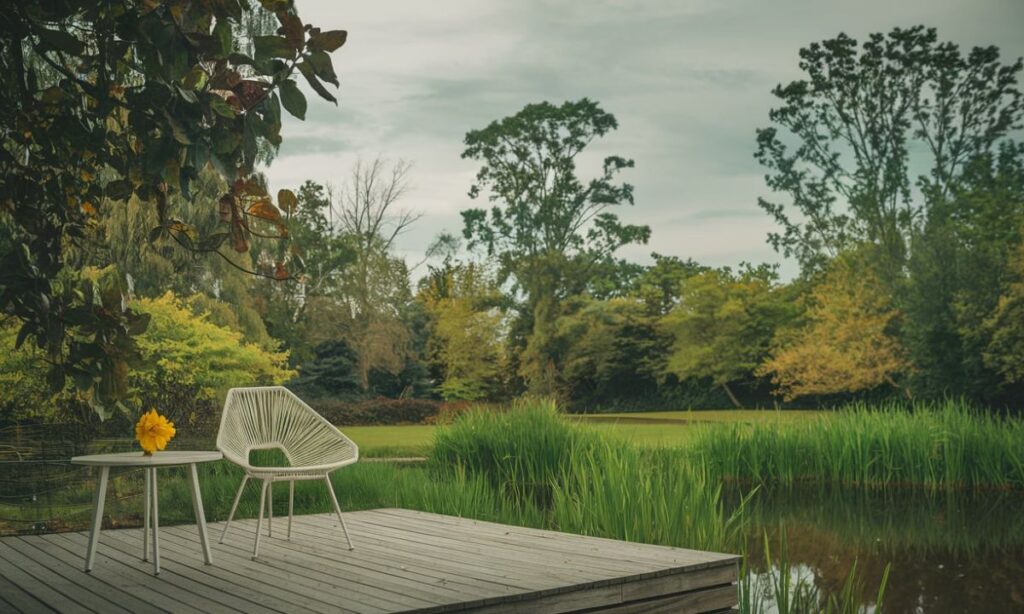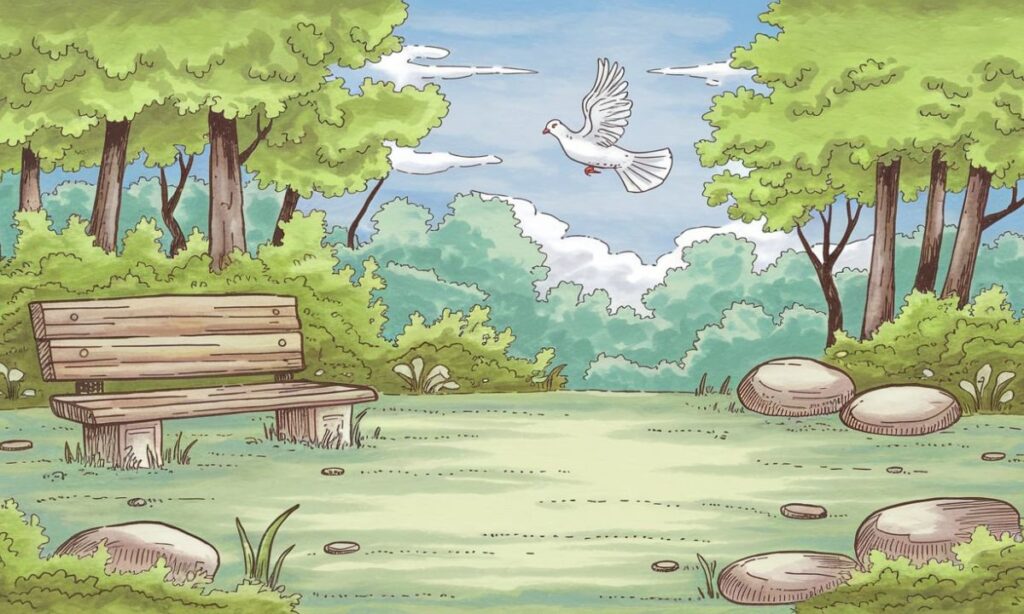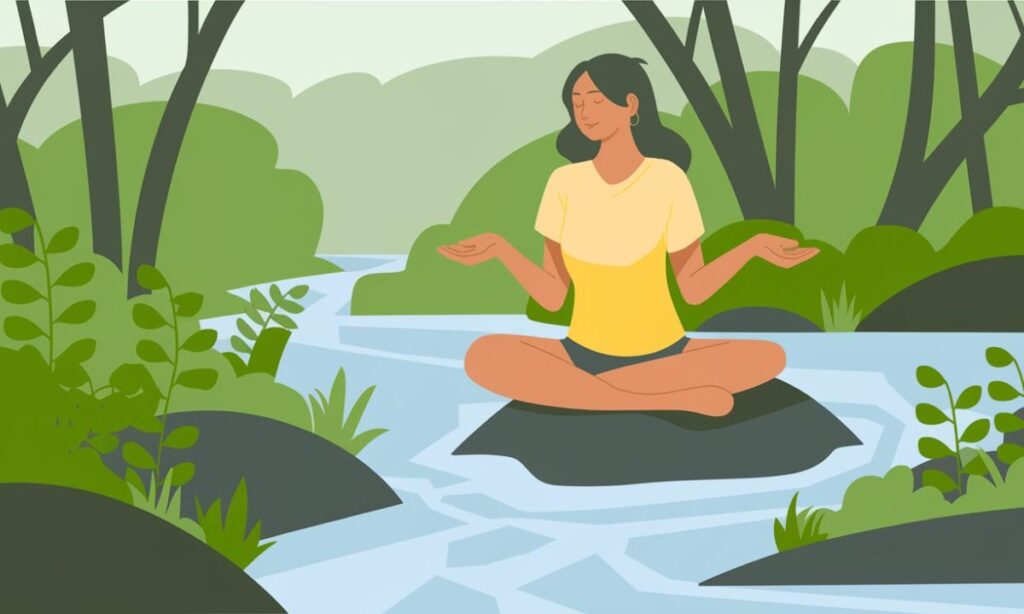The Power of Learning to Sit Back and Observe
In our fast-paced world, we often feel compelled to react to every situation instantly. However, the ability to “sit back and observe” can be transformative.
This practice encourages mindful living and helps individuals avoid unnecessary stress and impulsive decisions.
By consciously choosing to observe rather than react, we create a space for clarity, understanding, and thoughtful responses.
Mindful observation is not just a tool for managing stress but a way to develop deeper emotional resilience.
It allows us to navigate life’s complexities with a calm and measured approach, fostering a sense of inner peace and balance.
What It Means to Observe

Observation involves stepping back from immediate reactions to see situations clearly and objectively.
It’s about staying present, noticing details, and allowing space for thoughtful reflection rather than knee-jerk responses.
The Essence of Mindful Observation
- Present Moment Focus: Staying grounded in the here and now. This means letting go of distractions and fully engaging with the current experience.
- Non-Judgmental Awareness: Observing without assigning blame or judgment. By doing so, we open ourselves to new perspectives and insights.
- Clarity and Calmness: Gaining perspective before acting. This reduces the likelihood of making decisions based on incomplete information or heightened emotions.
Benefits of Observation
Practicing observation can lead to:
Emotional Regulation
Observing before reacting allows emotions to settle, promoting balanced responses. This is especially important during high-stress situations where our initial reaction might not align with our true intentions.
Reduced Stress
By not rushing into action, individuals can avoid unnecessary tension and anxiety. Observation creates a buffer zone that lets us process emotions and situations effectively.
Improved Decision-Making
With greater clarity, decisions become more thoughtful and effective. Observation enables us to evaluate options comprehensively, leading to better outcomes in personal and professional settings.
| Benefit | Impact |
| Emotional Regulation | Maintains calm under pressure. |
| Stress Reduction | Reduces overthinking and anxiety. |
| Thoughtful Responses | Enhances interpersonal relations. |
| Better Decision-Making | Encourages wise choices. |
The Trap of Constant Reacting

Many people fall into the trap of reacting instantly to situations. This often leads to stress, misunderstandings, and regret. Recognizing this pattern is the first step toward breaking free from it.
The Reactionary Cycle
Read this blog https://mindfulhealthsolutions.com/emotional-triggers-why-they-matter-how-to-manage-them-effectively/
The reactionary cycle is a repetitive loop of impulsive behaviors:
- Trigger: An event or situation that provokes an emotional response.
- Immediate Reaction: A knee-jerk action driven by emotion.
- Emotional Escalation: Intensified feelings due to the lack of reflection.
- Regret or Conflict: Negative consequences resulting from the impulsive reaction.
Common Triggers for Reactivity
Understanding triggers is essential for mindful living. Some common triggers include:
- Emotional Triggers: Anger, frustration, or fear. These emotions often cloud judgment and lead to hasty actions.
- External Pressures: Deadlines, expectations, or social situations. The need to meet demands quickly can cause undue stress.
- Past Experiences: Unresolved emotions or traumas. These can resurface unexpectedly and influence our responses.
| Trigger | Example |
| Emotional Triggers | Losing patience in traffic. |
| External Pressures | Stress from work deadlines. |
| Past Experiences | Reacting defensively to criticism. |
Breaking the Habit
How to Practice “Sitting Back and Observing”
Mindful observation requires intention and practice. Here are some steps:
- Pause and Reflect: Take a moment before responding. This creates a gap between the trigger and your reaction.
- Breathe Deeply: Calming breaths create space for reflection. Deep breathing also lowers stress levels and improves focus.
- Focus on the Present: Avoid jumping to conclusions. Being present helps you assess the situation more accurately.
- Identify Emotional Triggers: Recognize patterns that lead to impulsivity. Awareness of these triggers is key to managing them.
- Engage in Inner Peace Techniques: Meditate or practice mindfulness daily. These practices enhance your ability to remain composed.
| Step | Description |
| Pause and Reflect | Create a gap between stimulus and response. |
| Breathe Deeply | Reduces immediate stress. |
| Focus on the Present | Encourages clarity. |
| Identify Triggers | Awareness of reaction patterns. |
Techniques for Observation
Cultivating Patience
Patience is a crucial aspect of mindful observation. Here’s how to develop it:
- Practice Delayed Gratification: Wait before acting on impulses. This helps in making more thoughtful decisions.
- Mindful Breathing: Anchor yourself in the moment. Regular practice can enhance your ability to stay calm under pressure.
- Journaling: Reflect on situations to identify triggers and growth areas. Writing down your thoughts can provide valuable insights into your behavior.
Real-Life Examples
- Workplace: Instead of reacting to criticism, ask clarifying questions. This approach fosters understanding and collaboration.
- Relationships: Listen actively before forming conclusions. Patience and understanding can strengthen personal connections.
Conscious Awareness Techniques

- Meditation Practices: Dedicate time daily to mindfulness. Even a few minutes of meditation can significantly improve focus and emotional stability.
- Body Scan Exercises: Recognize physical tension caused by emotions. This awareness can help you address stress before it escalates.
- Visualization: Picture a calm, balanced response before reacting. Visualization can guide your behavior in challenging situations.
| Technique | Outcome |
| Meditation | Improves focus and reduces stress. |
| Body Scans | Builds awareness of physical cues. |
| Visualization | Encourages intentional responses. |
Integrating the Practice Into Daily Life
Making Observation a Habit
To make observation a regular part of your life:
- Set Daily Intentions: Begin your day with a mindful goal. For example, decide to approach all interactions with patience.
- Create Reminders: Use prompts to pause and observe. Sticky notes or phone alerts can be effective.
- Track Progress: Reflect on moments where observation helped. Documenting these experiences can reinforce the habit.
Balancing Action and Observation
While observation is vital, action must follow when appropriate. Mindful decision-making bridges the gap between observation and response.
| Aspect | Approach |
| Observation | Focus on clarity and perspective. |
| Action | Respond thoughtfully. |
| Balance | Combine patience with decisiveness. |
Building a Supportive Environment
Creating a conducive environment for mindful observation is essential:
- Surround Yourself with Mindful Individuals: Share the practice with supportive friends or groups. Their encouragement can motivate you.
- Use Mindfulness Apps: Leverage tools to remind and guide your observation practices. Apps like Headspace or Calm offer excellent resources.
- Celebrate Progress: Acknowledge growth to stay motivated. Recognizing even small improvements can keep you on track.
Tymoff’s Approach to Living Mindfully
Tymoff emphasizes the power of intentional living. By learning to observe without constant reaction, individuals can achieve:
- Inner Peace: A calm and centered mind. This state allows for more meaningful interactions and experiences.
- Conscious Awareness: Deep understanding of self and surroundings. Awareness is the foundation of personal growth.
- Balanced Perspective: Better responses to life’s challenges. Seeing situations from multiple angles fosters empathy and wisdom.
- Empowerment: Confidence in navigating life’s uncertainties. With a clear mind, decision-making becomes a source of strength.
| Aspect | Result |
| Inner Peace | Reduces stress and anxiety. |
| Conscious Awareness | Improves self-understanding. |
| Balanced Perspective | Enhances decision-making. |
| Empowerment | Builds confidence and clarity. |
FAQ’s
1. Why is observation important for mindful living?
Observation helps reduce impulsive reactions, promoting clarity and emotional balance.
2. How can I identify my emotional triggers?
Pay attention to situations where you feel stressed or reactive and reflect on the underlying causes.
3. Can observation improve relationships?
Yes, mindful observation fosters better communication and understanding.
4. How do I balance observation with action?
Use observation to gain clarity, then act thoughtfully based on your insights.
5. What if I fail to observe and react impulsively?
Reflect on the situation, learn from it, and try to pause before reacting next time.
Conclusion
Learning to “sit back and observe” is a powerful tool for navigating life’s challenges. By cultivating patience, practicing mindfulness, and integrating these habits into daily life,
individuals can achieve greater clarity, emotional balance, and inner peace. Tymoff’s philosophy reminds us that not everything needs an immediate reaction.
Sometimes, the best response is simply to observe, reflect, and then decide. This practice empowers individuals to live intentionally, create meaningful connections, and respond to life with wisdom and calm.
Visit my blog https://techyspirtz.com/

David is a seasoned SEO expert with a passion for content writing, keyword research, and web development. He combines technical expertise with creative strategies to deliver exceptional digital solutions.














